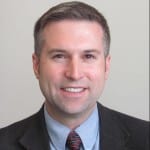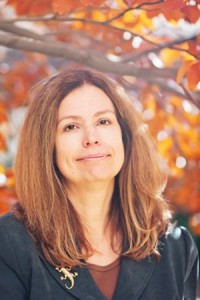Podcast: Download (69.0MB)
Subscribe: RSS
 Greg Smith studied physiology and English at the University of Alberta, but escaped into medical school before earning his degree. He then did his medical residency in Montréal, Québec, learning all the medical vocabulary and all the French Canadian slang that he didn’t learn during his LDS mission to Paris, France. He is now an old-style country doctor in rural Alberta with interests in internal medicine and psychiatry. A clinical preceptor for residents and medical students, he has been repeatedly honored for excellence in clinical teaching.
Greg Smith studied physiology and English at the University of Alberta, but escaped into medical school before earning his degree. He then did his medical residency in Montréal, Québec, learning all the medical vocabulary and all the French Canadian slang that he didn’t learn during his LDS mission to Paris, France. He is now an old-style country doctor in rural Alberta with interests in internal medicine and psychiatry. A clinical preceptor for residents and medical students, he has been repeatedly honored for excellence in clinical teaching.
Smith has a particular research interest in Latter-day Saint plural marriage and has been published in the FARMS Review and elsewhere on this and other topics. He was an associate editor of the Mormon Studies Review from 2011-2012. With twelve years of classical piano training, he is a lifelong audiophile and owns far too many MP3 files. He lives happily with his one indulgent wife, four extraordinary children, and two cats.
A member of FAIR since 2005, Greg helps manage the FAIR wiki and has contributed to multiple online journals as a reviewer of various issues and movements in and surrounding Mormon culture and theology. His article in the Interpreter that is the basis for some of the discussion in this episode is found here.
Some of the questions for this interview include:
So let’s get to the FairMormon Wiki. For those unfamiliar with the concept behind Wiki’s, what are they, how do they work, and why are they relevant?
People can go to this site with questions in mind, or perhaps if they are preparing for giving a lesson. Any chance that you know approximately how many topics or articles there are currently on the FairMormon Wiki?
One of the topics that is in the Wiki is that of Evolution. To be more specific, the questions and quotes about what we will refer to as organic evolution, or even biological evolution. But even that term comes pretty heavily loaded. So, let’s set a sort of foundation of what we mean when we say “evolution?”
This is a question that rests on the mind of some latter-day Saints. I have been taught creationism in church, and scientific theory in school, and both seem to have merit yet, they also seem to be be taught as dichotomies. As part of wanting to answer those questions, you wrote an article in the Interpreter where you “reviewed” or as I like to put it, you reconciled, six different books that profess to offer a bridge to evolution and Christianity. I want to first put out what is probably one of the foundational quotes germane to our discussion of the topic of Evolution with respect to Mormon Theology and doctrine. You include it as the opening for your article in The Interpreter entitled “Endless Forms Most Beautiful: The uses and abuses of evolutionary biology in six works.” The article opens:
The position of the Church on the origin of man was published by the First Presidency in 1909 and stated again by a different First Presidency in 1925:
The Church of Jesus Christ of Latter-day Saints, basing its belief on divine revelation, ancient and modern, declares man to be the direct and lineal offspring of Deity…. Man is the child of God, formed in the divine image and endowed with divine attributes…
The scriptures tell why man was created, but they do not tell how, though the Lord has promised that he will tell that when he comes again (D&C 101:32–33). In 1931, when there was intense discussion on the issue of organic evolution, the First Presidency of the Church, then consisting of Presidents Heber J. Grant, Anthony W. Ivins, and Charles W. Nibley, addressed all of the General Authorities of the Church on the matter and concluded,
Upon the fundamental doctrines of the Church we are all agreed. Our mission is to bear the message of the restored gospel to the world. Leave geology, biology, archaeology, and anthropology, no one of which has to do with the salvation of the souls of mankind, to scientific research, while we magnify our calling in the realm of the Church.… Upon one thing we should all be able to agree, namely, that Presidents Joseph F. Smith, John R. Winder, and Anthon H. Lund were right when they said: “Adam is the primal parent of our race.”
—First Presidency Minutes, April 7, 1931
Does this statement constitute an official stance from the LDS Church on Evolution? Why or Why not?
President Hinckley made the following statement, “What the church requires is only belief ‘that Adam was the first man of what we would call the human race.’ Scientists can speculate on the rest.” With such a wide open field for faithful belief on this subject, why is there so much debate do you suppose?
The six books that you review in your article in the Interpreter represent a wide variety of perspectives,. The six are:
Michael Dowd. Thank God for Evolution.
Karl W. Giberson. Saving Darwin: How to be a Christian and Believe in Evolution.
Daniel J. Fairbanks. Relics of Eden: The Powerful Evidence of Evolution in Human DNA.
Howard C. Stutz. “Let the Earth Bring Forth”, Evolution and Scripture.
David C. Stove. Darwinian Fairytales: Selfish Genes, Errors of Heredity, and Other Fables of Evolution.
William A. Dembski. The End of Christianity: Finding a Good God in an Evil World.
Why did you pick these titles?
We don’t have the time to go into each one, and I hope that people will take the time to read the article that we will have linked to this episode at blog.fairmormon.org. So let’s speak in broader terms. The topic of evolution, as with any topic that involves the heavy secular constructs and reconciling them with religious beliefs, is a tricky proposition. There are warnings against mixing the philosophies of men and mingling them with scriptural passages and modern day revelation. Yet, we hear quotes from President Hinckley leaving it wide open to do so. What is the right formula for mixing science and religion, specifically with the topic of evolution?
It seems that once we come to an understanding that Adam is the first man of what we would call the Human race, why else should we care about Evolution? In another manner of speaking, What are some questions that Latter-day Saints should be asking about Evolution?
Elder Widstoe and others have made comments from time to time that seem to imply that some form of evolution was used in the creation. Even Joseph Smith pointed out that the Earth was organized from matter that already existed, thus to some degree, creation was the evolution of these elements into something that was multiplied by the hand and word of God. The earth itself evolved from space, to organized matter, to water, to earth, and other forms came from this same process of organization—from building on the stage of creation that proceeded it. Even the creation of the human body in the mother’s womb starts out as a single egg that evolves into a person. So, there clearly is a place for evolution in creationism, evidence for such is in the mirror. So why, as you put it in your article, do we see that these stark choices are almost always unnecessary, yet the line seems to be drawn in the sand so to speak?
Will the end result of science be proof that God exists and that the biblical narrative is true?
 Rick Anderson is Associate Dean for Scholarly Resources & Collections in the J. Willard Marriott Library at the University of Utah. He earned his Bachelors and Masters in .Library Information Systems degrees at Brigham Young University. He serves on numerous editorial and advisory boards and is a regular contributor to the Scholarly Kitchen blog and to Library Journal’s Academic Newswire.
Rick Anderson is Associate Dean for Scholarly Resources & Collections in the J. Willard Marriott Library at the University of Utah. He earned his Bachelors and Masters in .Library Information Systems degrees at Brigham Young University. He serves on numerous editorial and advisory boards and is a regular contributor to the Scholarly Kitchen blog and to Library Journal’s Academic Newswire.


 Prior to graduating from BYU,
Prior to graduating from BYU,  Royal Skousen is a professor of linguistics and English at Brigham Young University. He is considered to be a leading expert on the textual history of the Book of Mormon.
Royal Skousen is a professor of linguistics and English at Brigham Young University. He is considered to be a leading expert on the textual history of the Book of Mormon.